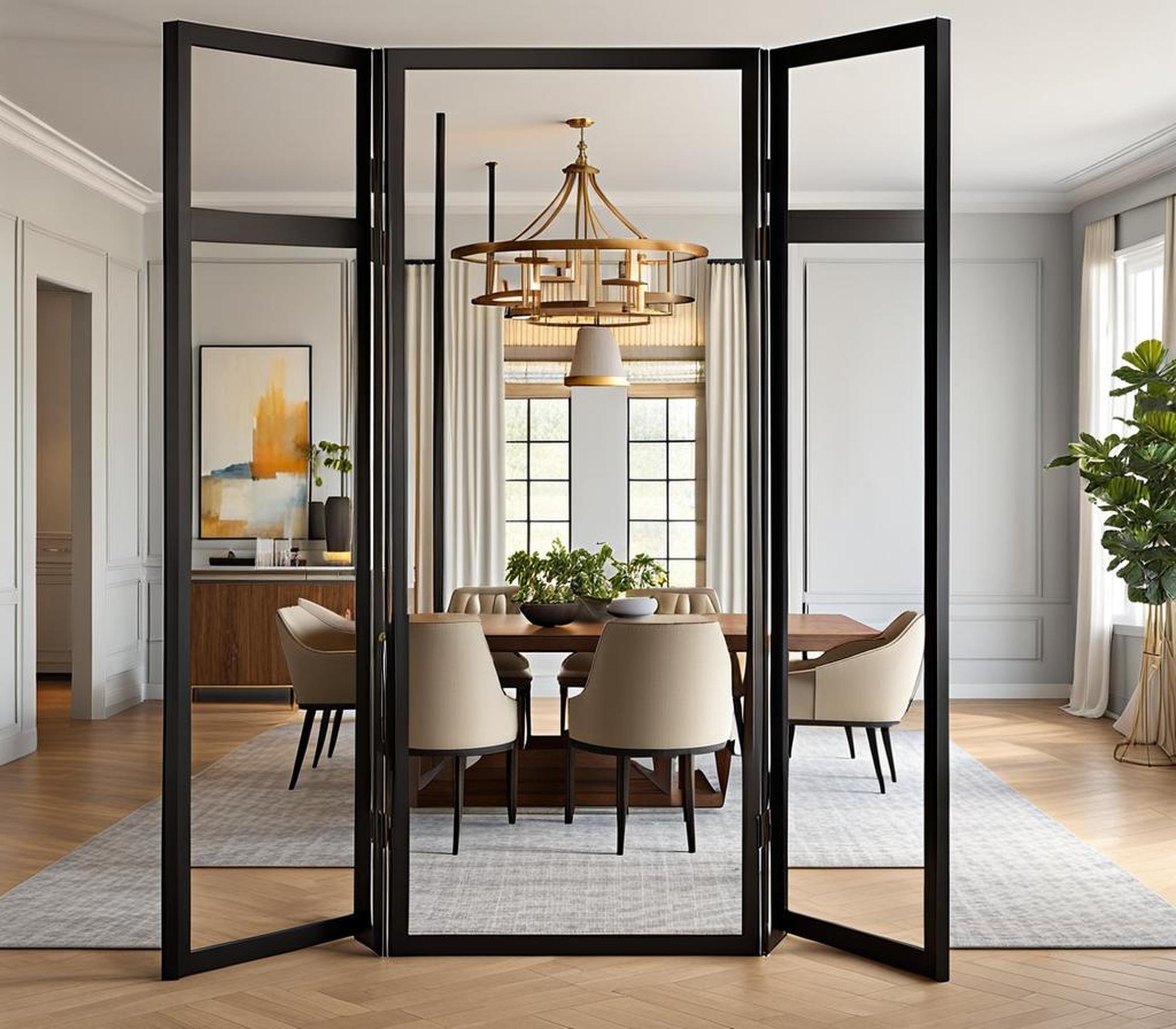Do you ever feel like your open concept home leaves you feeling exposed? The living room flows right into the dining area without separation, making it tricky to delineate different functional spaces. If you long for a layout that allows for better space definition without completely closed off rooms, room dividers present the perfect solution.
Dividers can transform cramped, undefined areas into separated zones that feel significantly larger. With clever placement and the right style, you can craft and maximize the layout you desire. Let’s explore the many options for dividers between living and dining rooms, plus expert advice for choosing and installing the ideal divider in your home.
Types of Room Dividers
Room dividers come in a range of styles, materials, sizes and price points. Consider how permanent versus adjustable you need the divider to be, along with visual privacy and your overall aesthetic.

Folding & Sliding Dividers
Dividers that fold or slide open and closed offer flexibility. Japanese-style folding screens collapse accordion-style when not in use for a space-saving option. Sliding barn door-style dividers run along a ceiling track to adjust the opening.
Pros: Adjustable, space-saving, allows rooms to be combined when needed.
Cons: Less separation and privacy, can be noisy and disruptive to open/close.
Materials: Wood, rice paper, metal, plastic, fabric.
Freestanding Dividers
Freestanding dividers are completely movable and don’t require attachment to walls or ceilings. Think antique screens, modern bookshelves, or home office cubicles.
Pros: Customizable placements, inexpensive, easy installation.
Cons: Less stability, take up valuable floor space.
Materials: Wood, metal, fabric, glass.
Glass Dividers
For modern sophistication, glass dividers include options like frosted, tinted, patterned, or clear glass. Some have etchings or built-in shelving.
Pros: Open and airy, allows light transmission between rooms.
Cons: Less privacy, can show smudges.
Materials: Glass, metal framing.
Bookshelves & Storage Dividers
Bookcases and storage units like cubes or cabinets can divide a space while offering decor and hidden storage.
Pros: Adds storage and display space. Visually appealing.
Cons: Bulky, permanent, fixed sizes.
Materials: Wood, glass, metal finishes.
Key Considerations for Choosing a Divider
Divide and conquer your layout goals with the right divider for your needs. Keep these key factors in mind while browsing options:
- Location – Consider ceiling height, proximity to walls, and traffic flow.
- Privacy – Assess if you need an opaque versus transparent style.
- Permanence – Determine if you want fixed or adjustable room division.
- Traffic flow – Ensure the divider doesn’t disrupt room circulation.
- Style – Match your space’s existing design aesthetic.
- Budget – Compare prices to find the best value option.
Style Ideas for Room Dividers
Room dividers aren’t one-style-fits-all. Match your divider to your interior design taste for a cohesive look. Here are some popular genre ideas:
- Industrial: Pipe or metal grate dividers have an urban loft vibe.
- Rustic: Reclaimed wood dividers complement farmhouse aesthetics.
- Modern: Glass, acrylic or patterned dividers create sleek separation.
- Eclectic: Go bold with globally inspired patterned fabric or printed folding screens.
Divider Ideas for Small Spaces
Open concept studio and small space dwellers can still benefit from dividers. Use these approaches to divide rooms without overwhelming your layout:
- Install sliding panels that conserve square footage when open.
- Select glass or acrylic dividers for an airier, less obstructed feel.
- Repurpose a bookcase or shelving unit to double as a room separator.
- Add a folding screen for flexible division when needed.
Installation Tips and Tricks
Execute your divider placement flawlessly with proper planning and these pro tips:
- Carefully measure the divider location for a custom fit.
- Level freestanding dividers to improve stability.
- Use removable adhesive or installers for non-permanent dividers.
- Note pattern orientation for coordinated divider alignment.
- Follow any safety guidelines for heavy dividers like glass partitions or bookcases.
A divider between living and dining zones can entirely transform an open concept home. With better definition, you can enjoy distinct spaces that still maintain an airy, connected flow when desired.
Review popular divider styles and materials to find the right fit. Glass, wood and fabric dividers all impart different aesthetics. Measure carefully and consider traffic patterns for seamless placement.
Most importantly, choose a divider that speaks to your personal style. With an on-theme partition wall or folding screen, you can reclaim a comfortable layout that celebrates both openness and division.
